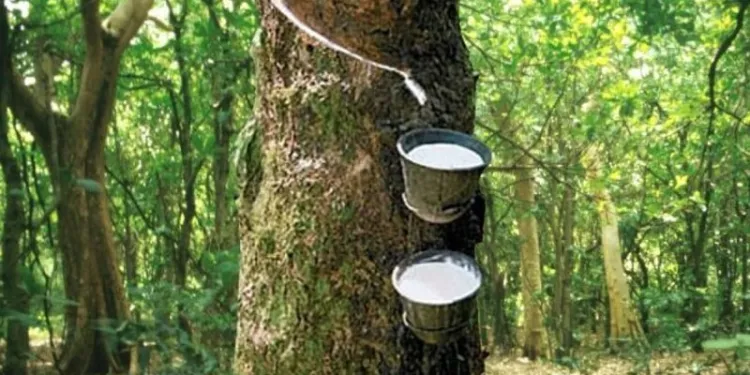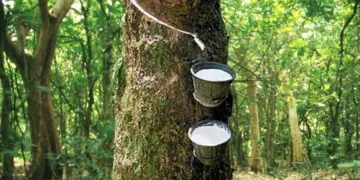Last hurrah with our Silverado pickup takes us pro bass fishing
I’m standing on the deck of a Ranger Z520 bass boat in Beaver Lake, Ark., and Captain Blake Smith is hugging me. Then he’s yelling, “Thank you Lord!” and dropping to his knees, and pointing to the sky and yelling, “Thank you Jesus!” In my right hand is a net, and in the net, there’s largemouth bass so pregnant it looks like it might start shooting bass caviar all over the boat’s rubber floors at any moment.
In the waning moments of the first day of the Fishing League Worldwide Beaver Lake professional bass-fishing tournament, Captain Smith had been a fish short of his five-fish limit, staring down the possibility that he and his young family had made the trip from sunny Lakeland, Fla., to drizzly Arkansas for nothing. Then, he flipped a white spinner bait that looked like a small Alexander Calder mobile into some brush and the water exploded and he started yelling about a net. Then he was on his way to pocketing $ 4,000 for finishing 61st out of 154. The winner, Matt Arey, took home $ 125,000.
At that point, I was about halfway through a 1,700-mile road trip in our long-term Chevrolet Silverado, a truck that up until that point I hadn’t spent much time in.
It’s a great big thing, which OK, that’s obvious. That’s why they call it full-size. But what isn’t obvious when you’re watching the TV ads where a guy in a hard hat points a gloved hand at some girders or romps around some scenic and muddy place is that the bigness that makes it great in those scenarios makes it a little unwieldy in the types of situations that your average urbanite tends to encounter on the regular. My experience with our maroogundy long-termer tended to involve a lot of gingerly backing in and out of tight parking spaces with my eyes fixed on the rearview screen or staring out over the expansive hood at drivers seemingly indifferent to the prospect of car-to-car contact. Sure, we’d towed a boat or two, moved piles of furniture and done plenty of commuting, but I for one never spent more than a few nervous hours in command of the good ship Silverado. I needed a road trip.

Our staff kicked around a lot of ideas before we decided that one of us should go fishing. We were about two hours into a “nobody’s leaving this room until we have a story idea” meeting before someone suggested that we should try to enter a pro-bass fishing tournament somewhere far away. In the interest of taking things a step or two further than they ought to be taken, I emailed the FLW, which is to fishing what the PGA is to golf. Surprisingly, the response from the FLW was affirmative and enthusiastic. After some discussion with FLW PR, we decided that the Beaver Lake, Ark., tournament provided a sufficiently long road trip and the best “tournament atmosphere.” We had our road trip scheduled.
The FLW offers non-pros the opportunity to ride along as co-anglers with its tour professionals the first two days of a tournament. They fish from the back of the boat, allowing the pros first crack at the best spots and they compete amongst themselves for a smaller, though not at all insubstantial pot of prize money — the co-angler who placed first at Beaver Lake took home $ 20,000. Many of them are locals, many of them travel to whatever events they can.
At some point shortly after hearing from the FLW, I realized I didn’t have any bass-fishing equipment or, really, any substantive experience. I’d caught bass on a fly rod and fooled around with plastic baits, but most of the actual bass fishing I’d done involved a nightcrawler, a bobber and one of those Snoopy-branded fishing poles you get at the grocery store. I talked another editor who had watched a lot of tournament bass fishing on TV into going with me, but as it drew closer, he kept nervously telling me he didn’t know how to swim. He left Autoweek before the tournament, probably because he saw it as his only way out.
Since I’d soon be sitting in a boat operated by a bonafide FLW pro who would be competing in the tournament not as part of a story for a car magazine, but as part of his job as a professional angler, I started feeling like I should try to figure out how I was going to avoid screwing it up.
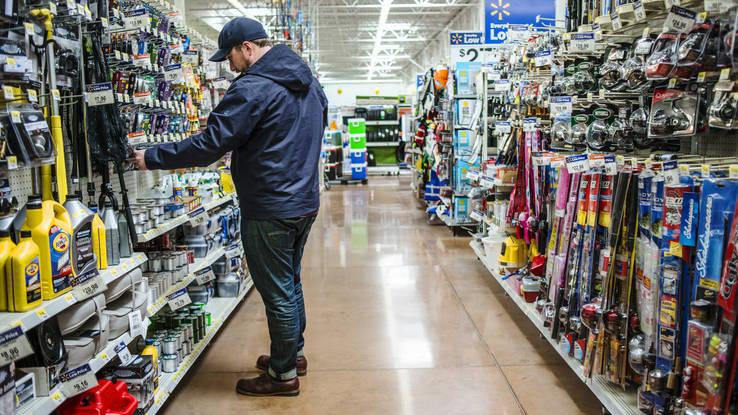
Initially, I had two goals: 1. Don’t drown. 2. Don’t set a hook in whatever pro was unlucky enough to be assigned to me. To accomplish the second goal, I needed to practice. I started emailing people who knew about bass fishing. I asked a friend who is a biologist studying freshwater fish with the U.S. Fish and Wildlife Service if he knew any secrets. He explained that, first of all, he worked with sturgeon, and second, there’s no secret. If there were a secret trick to catching fish, it wouldn’t be fishing.
St. Croix, maker of what it says are “The Best Rods on Earth,” agreed to sponsor the trip, sending me a selection of Mojo Bass rods, and hooked me up with someone from Daiwa who sent a selection of Tatula baitcasting reels and a spinning reel. But, due to circumstances beyond anyone’s control, the reels arrived the day before I was scheduled to depart for the tournament, leaving me no time to get everything set up and try it out.
I’d asked photographer Josh Scott to join me on the trip, and, as usual, he was game. Two days before the tournament, we loaded the Silverado and pointed it south.
In crew-cab form, the truck has a surprising amount of interior space. We loaded the bed of ours with camera equipment and fishing rods and had plenty of space to spare, which is more impressive than it sounds because the fishing rods didn’t break down. That left more than enough room for luggage and foul-weather gear in the back seats. If we’d brought a couple of extra passengers and their gear with us, we’d have been just as comfortable.
The drive from Detroit to the shores of Beaver Lake should take about 13 1/2 hours if you don’t stop for an hour in Chicago … and for two hours at a Walmart halfway through Illinois. Associate editor Graham Kozak and I had stayed up well into the morning of my departure, inexpertly applying vinyl sponsor decals to the Silverado. I figured Josh and I would make the drive in one night, leaving us a day to practice, set up equipment and rest.
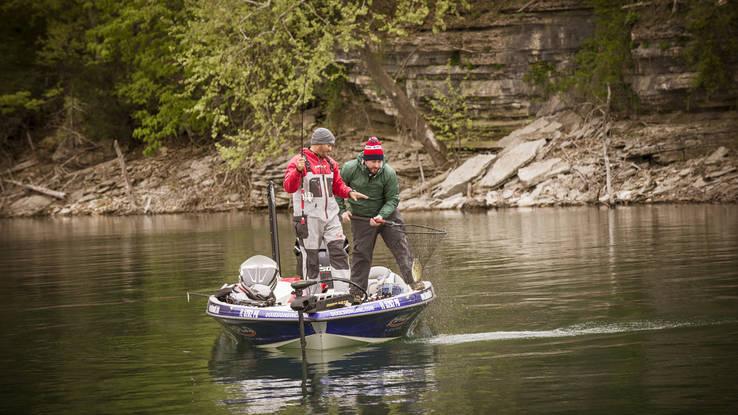
It didn’t exactly work out that way, but it wasn’t the fault of the Silverado, which is well suited to highway cruising. I had already discovered on a cross-country road trip in a Stingray that Chevy’s nav system’s ability to “figure out” a partial, or partially correct, address is invaluable. As has been the case over the course of our Silverado test, fuel economy isn’t quite what the EPA thinks it should be — we averaged 15.08 mpg for the trip, bringing down the average for the quarter, if only slightly. I blame the vinyl sponsor decals.
In Illinois, I decided to stop for food, gas and fishing gear. I had rods and reels, but according to the guide on the FLW website, I’d need a pretty substantial pile of jig heads, crankbaits, plastic worms, weights, buzzbaits and fishing line. Since Walmart is the title sponsor of the FLW, I stopped there.
I stared at an equipment list on the FLW site and back at half an aisle of fishing stuff. For about an hour, I stuck to the list. But as our ETA edged toward the morning, I decided to err on the side of having more than I needed and pretty much dumped the whole aisle into the cart. I ended up with a line of 15 Walmart shoppers eyeballing me as the cashier rang up $ 660 worth of lures and line. My credit card was expired.
We stopped at a Comfort Inn at around 3 a.m., refusing the first room offered because there was a pretty decent-size pile of red-wine vomit next to a bed. We settled for the room next door, with a smaller amount of another more personal bodily fluid next to one of the beds and a lot of long hair on the pillows and sheets. After sprinting all the way into the parking lot because I’d imagined there was something alive in my bed, I settled in for a couple of hours imagining I was covered in bedbugs.
On the way out of town, I stopped for a life preserver at a Bass Pro Shop. I spent 15 minutes eyeing one of those fancy belts that auto-inflate with a CO2 charge when they get wet. I ultimately saved $ 50 and bought a regular, nerd-ass life jacket and then drove the last couple of hours.
(Later, I’d hear of a pro who flipped his boat, knocked himself out and came to at the bottom of a lake. Neither his, nor his passenger’s, life preservers inflated.)
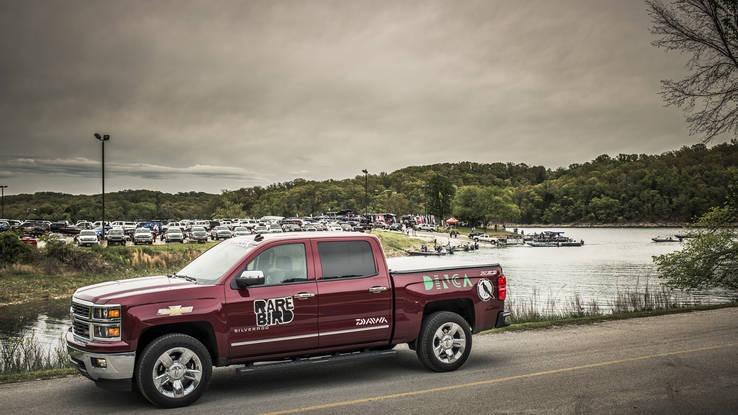
Beaver Lake sits in a valley in the Ozarks, atop the ruins of a resort called Monte Ne. It’s actually a reservoir that was created when a big portion of the 722-mile White River was impounded by the Beaver Dam, which was constructed by the Army Corps of Engineers between 1960 and 1966.
Like the reservoirs nestled behind thousands of American dams, Beaver Lake isn’t really what you’d think of as a lake, and it’s not exactly what you’d call a river. It’s shaped like the roots of a tree with a fat central stem in the deepest part of the valley and narrow, dichotomous branches reaching up into the mountains like the flooded footprints of birds.
The water is surrounded by high rock walls and pine trees, and from the water, you can tell you’re staring at the side of a small mountain. There are also a lot of dead, half-submerged trees and bushes to remind you that this place wasn’t always underwater while also providing good spots for bass to live. Because of the variable water levels, all the docks on the lake float. They’re attached to rocks and trees on the shore using long cables and ratcheting winches. It’s an undeniably pretty place, but there’s a familiar-yet-alien aspect to it — it’s hard to forget that it isn’t natural.
The lake is a stone’s throw from Walmart global headquarters in Bentonville, Ark., though the tournament is actually held in Rogers, Ark. In Rogers, there’s a sleepy, charming downtown that abuts a new and bustling hotel/strip-mall district that presumably serves the people who work at Walmart HQ and a lot of visitors wearing corporate-logoed polo shirts and pleated khakis.
We arrived at the tourney early and spent some time getting the lay of the land before meeting up with tour pro Casey Martin, who was smart, affable and profoundly helpful. Our conversation revealed that most of what I’d purchased at Walmart would be entirely useless in the tournament, leading to another three-hour trip to Walmart and another near-sleepless night prepping equipment according to instructions I found on YouTube.
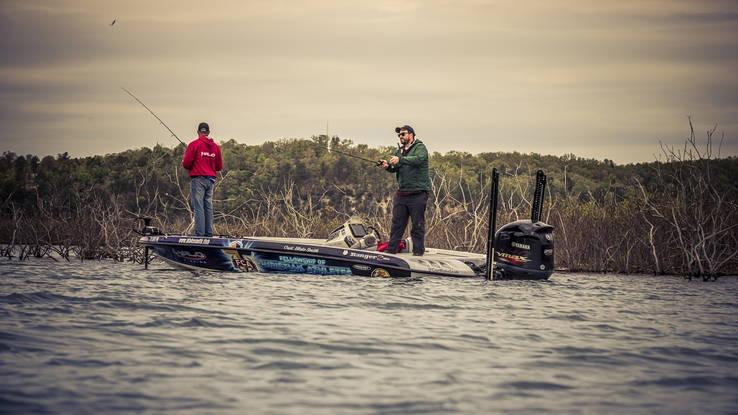
On day one, I caught exactly one fish long enough to take to the weigh station. In fact, the man who measures the fish had to rub the little guy’s belly a little to get him to stretch out to the 12-inch minimum. Still, I got to stand in line with my fish in a special bag, transferring it from one aerated bucket to another before walking up to the podium, standing in front of a TV camera, weighing a tiny fish and muttering something that fans laughed at.
On day two, I landed a fish that looked long enough to weigh but was found to be slightly undersized — no amount of belly rubbing could make it longer. Walking my tiny fish past the line of competitors and back to the release station was humiliating, even if everyone said it happens to lots of guys. After two days trying to stay out of the way of pros Smith and Richard Lowitzki, I caught five fish in total.
Nearly every co-angler and every pro who traveled to the weekend’s tournament had done so in a full-size pickup of one sort or another. As Ram was the tournament sponsor, there were plenty of those on hand, mostly in full vinyl wraps. A truck’s ability to tow a boat, swallow up rods and gear, and ferry passengers down the freeway in comfort are a big part of why they dominate bass-tournament parking lots. The other part has to be that arriving in anything else just seems wrong.
Over the course of the week, the late nights rigging equipment and early mornings on the water had me dreading the long drive home. But when it was over, I packed the Silverado with gear, settled into the driver’s seat and drove back to Detroit, stopping only for gas. Like the rest of the equipment I’d used that week, the truck quietly did all that was asked of it. It was never uncomfortable or inconvenient or anything short of perfectly easy to live with. That probably sums up our experience with the Silverado overall.



